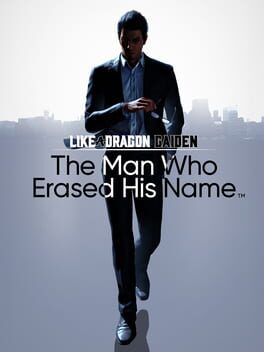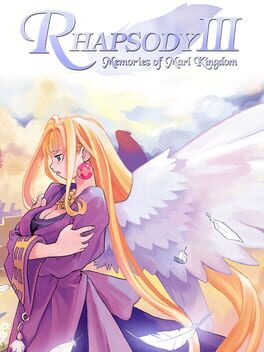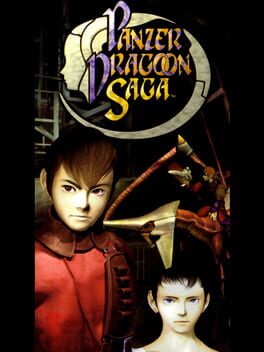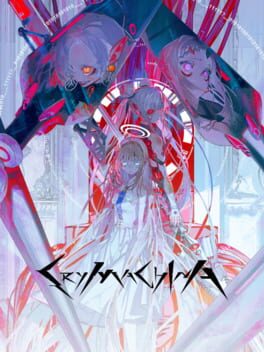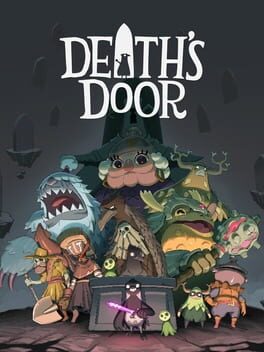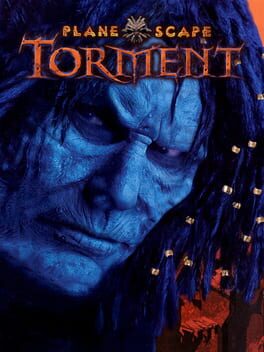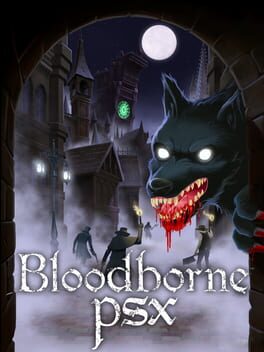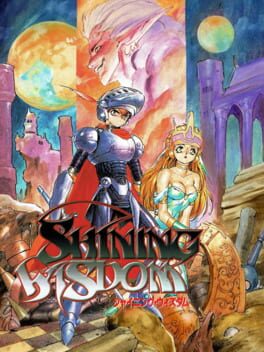AllenVG
182 Reviews liked by AllenVG
Rhapsody III is a very different game from the first two games in the trilogy. It reminds me a lot of Sky the Third (to those Trails fans) and one part even reminds me of Trails to Reverie. The game consists of multiple separate side stories. Most of them aren't particularly relevant, but add a little extra to the lore and world.
The highlight stories are the 2nd which continues from where Rhapsody II's epilogue left off, the 5th which follows the MVP of the trilogy through multiple periods of their life and the 6th which sort of ties everything together.
Despite the minor relevancy of some of them, they are all humorous and at times, emotional which is expected for a Rhapsody game. Most are on the short side at just about 1-2 hours of actual story.
The combat have also changed. It takes the simple turn-based combat from Rhapsody II, but adds 4 rows of party members. Each row has a leader and they get a stat boost from the other three in their squad. You can potentially bring 16 party members into battle at the same time and they will all attack.
This brings me to a major issue that I had with the game. It has a strong dungeon crawling and combat emphasis and with the large party size, there's a lot of grinding needed to get everybody geared up and to an appropriate level. Straight grinding was pretty much optional for the first two games so having it here kind of drags down my experience.
The game took me 18 hours to complete even though there isn't a lot of story and the dungeons aren't that long.
Overall, Rhapsody III does have some important stories to tell here and does provide a good conclusion to the trilogy. While I'm not a fan of how some of the gameplay execution was here, it's another entry worth playing even if the game's structure is pretty different from the first two games.
The highlight stories are the 2nd which continues from where Rhapsody II's epilogue left off, the 5th which follows the MVP of the trilogy through multiple periods of their life and the 6th which sort of ties everything together.
Despite the minor relevancy of some of them, they are all humorous and at times, emotional which is expected for a Rhapsody game. Most are on the short side at just about 1-2 hours of actual story.
The combat have also changed. It takes the simple turn-based combat from Rhapsody II, but adds 4 rows of party members. Each row has a leader and they get a stat boost from the other three in their squad. You can potentially bring 16 party members into battle at the same time and they will all attack.
This brings me to a major issue that I had with the game. It has a strong dungeon crawling and combat emphasis and with the large party size, there's a lot of grinding needed to get everybody geared up and to an appropriate level. Straight grinding was pretty much optional for the first two games so having it here kind of drags down my experience.
The game took me 18 hours to complete even though there isn't a lot of story and the dungeons aren't that long.
Overall, Rhapsody III does have some important stories to tell here and does provide a good conclusion to the trilogy. While I'm not a fan of how some of the gameplay execution was here, it's another entry worth playing even if the game's structure is pretty different from the first two games.
Panzer Dragoon Saga
1998
Genre: Lonely Dragon Riding RPG | Released: 1998 | Platform: Sega Saturn (sigh) | Developer: Team Andromeda | Publisher: Sega | Language: English | Length: 18 hours | Difficulty: Moderate | Do I Need To Play Anything First: No, I this is the first Panzer Dragoon Game I have played | Accessibility Options: Zilch | Monetization: Single Purchase | Microtransaction: None | Gambling Elements: None | Content Warning: Very mild violence and mild substance references | Parenting Guide: 13 and up for sure | How Did You Play It: On a Sega Saturn. And I totally bought a legit copy and not a knock off, for sure yes yes | Did you need a guide: Yes, I could not for the love of god find a hallway hidden behind a building | Mods: None
Is It Good: Yes, it’s excellent.
Back of the Box: Hey, it’s that game on eBay for $900.
Legend has it that only 10,000 copies of Panzer Dragoon Saga were made for the English world. Plus it’s exclusive to the Sega Saturn which, well, did not sell very well. Given its frankly insane current market value most people have not played this game, nor have they heard of it (unless you are a filthy pirate, which I know none of you are).
This is a shame as Panzer Dragoon Saga a landmark RPG that deserves a spot along in the pantheon of fantastic Japanese Role-Playing games. This is lean, exciting, no fluff RPG with a fantastic battle system, fun plot (Which is fully voiced), great cinematics, and outstanding art design. I loved that battle system, a fascinating combination of a rail shooter and turn-based combat.
This is no hidden gem, it’s a full-on JRPG crown. Wear it if you can.
Is It Good: Yes, it’s excellent.
Back of the Box: Hey, it’s that game on eBay for $900.
Legend has it that only 10,000 copies of Panzer Dragoon Saga were made for the English world. Plus it’s exclusive to the Sega Saturn which, well, did not sell very well. Given its frankly insane current market value most people have not played this game, nor have they heard of it (unless you are a filthy pirate, which I know none of you are).
This is a shame as Panzer Dragoon Saga a landmark RPG that deserves a spot along in the pantheon of fantastic Japanese Role-Playing games. This is lean, exciting, no fluff RPG with a fantastic battle system, fun plot (Which is fully voiced), great cinematics, and outstanding art design. I loved that battle system, a fascinating combination of a rail shooter and turn-based combat.
This is no hidden gem, it’s a full-on JRPG crown. Wear it if you can.
Crymachina
2023
「やさしさで守れるあしたなんかどこにもない」
Anti-humanist yuri SF. All too often stories about sentient robots really only serve to stroke the ego of the humans creating and consuming them -- see the utterly abysmal anime Vivy for a great example of this -- but Crymachina is unwaveringly transgressive, reaching the conclusion that there is no inherent value in "humanity" and going on to posit that human society does not deserve to proliferate if that means trampling on intelligent beings it views as inferior.
As with Crystar, Crymachina's characters are concerned primarily with their own happiness, acting for the sake of the people they hold dear. And yes, the game is unabashedly queer, with characters driven not just by familial bonds but romantic love; indeed I am hard-pressed to think of another JRPG where love is such a strong motivating factor for the principal cast. Leben and Enoa struggle against the system not out of a sense of obligation or duty, but because of their desire for a life with one another, because their future together is being threatened. While the world of Crymachina is built on high-concept SF, taking enough cues from the novel The Three-Body Problem to warrant citing it in the end credits, its conflict remains raw, poignant, and grounded to a degree a great deal of media struggles to achieve.
Where I think the game will prove divisive is actually its runtime. Crymachina clocks in at only 15-20 hours of playtime, so it has to cover a lot of twists and turns fast. I can completely understand someone feeling as though the plot and characters don't have time to breathe, but I personally would argue that the script is tight enough that anything added to it could be nothing more than chaff. On Twitter I stated that it has "Blue Archive pacing," and I meant that in a complimentary sense. Certainly a YMMV aspect of the game, but it personally worked for me.
What I think most players will appreciate, though, is how abbreviated, even cursory, the actual gameplay is when compared to Crystar. You may have to grind a few times, but the stages are short and you are not forced to repeat content ad nauseam; I would estimate I spent only around 5 hours of my 16 hour playtime actually controlling characters. As such, while the game is much shorter than Crystar, I would not be surprised if it actually had more text...
And of course I would be remiss not to mention another one of the game's strong suits -- the audio. Personally I think Crymachina's soundtrack is sakuzyo's best work period, with much more varied compositions than Crystar. It helps that the music is used much better here than Crystar, with fewer and less repetitious music cues letting you appreciate the individual tracks more. As one might expect, the voice acting is also sublime, with Tohno Hikaru's performance as Enoa in particular lending the scenario some real emotional weight.
All in all Crymachina is a very different game from Crystar, but it pleasantly surprised me with its powerful script, acerbic critique of the ugly aspects of human society, and willingness to be fully-fledged romantic yuri in a space where few works meaningfully depict love at all. This is definitely my favorite Furyu game... make of that statement what you will, I suppose.
Anti-humanist yuri SF. All too often stories about sentient robots really only serve to stroke the ego of the humans creating and consuming them -- see the utterly abysmal anime Vivy for a great example of this -- but Crymachina is unwaveringly transgressive, reaching the conclusion that there is no inherent value in "humanity" and going on to posit that human society does not deserve to proliferate if that means trampling on intelligent beings it views as inferior.
As with Crystar, Crymachina's characters are concerned primarily with their own happiness, acting for the sake of the people they hold dear. And yes, the game is unabashedly queer, with characters driven not just by familial bonds but romantic love; indeed I am hard-pressed to think of another JRPG where love is such a strong motivating factor for the principal cast. Leben and Enoa struggle against the system not out of a sense of obligation or duty, but because of their desire for a life with one another, because their future together is being threatened. While the world of Crymachina is built on high-concept SF, taking enough cues from the novel The Three-Body Problem to warrant citing it in the end credits, its conflict remains raw, poignant, and grounded to a degree a great deal of media struggles to achieve.
Where I think the game will prove divisive is actually its runtime. Crymachina clocks in at only 15-20 hours of playtime, so it has to cover a lot of twists and turns fast. I can completely understand someone feeling as though the plot and characters don't have time to breathe, but I personally would argue that the script is tight enough that anything added to it could be nothing more than chaff. On Twitter I stated that it has "Blue Archive pacing," and I meant that in a complimentary sense. Certainly a YMMV aspect of the game, but it personally worked for me.
What I think most players will appreciate, though, is how abbreviated, even cursory, the actual gameplay is when compared to Crystar. You may have to grind a few times, but the stages are short and you are not forced to repeat content ad nauseam; I would estimate I spent only around 5 hours of my 16 hour playtime actually controlling characters. As such, while the game is much shorter than Crystar, I would not be surprised if it actually had more text...
And of course I would be remiss not to mention another one of the game's strong suits -- the audio. Personally I think Crymachina's soundtrack is sakuzyo's best work period, with much more varied compositions than Crystar. It helps that the music is used much better here than Crystar, with fewer and less repetitious music cues letting you appreciate the individual tracks more. As one might expect, the voice acting is also sublime, with Tohno Hikaru's performance as Enoa in particular lending the scenario some real emotional weight.
All in all Crymachina is a very different game from Crystar, but it pleasantly surprised me with its powerful script, acerbic critique of the ugly aspects of human society, and willingness to be fully-fledged romantic yuri in a space where few works meaningfully depict love at all. This is definitely my favorite Furyu game... make of that statement what you will, I suppose.
Panzer Dragoon Saga
1998
The misty swirls of the horizon. The eerie darkness of the underground chambers. The imposing fog of the valleys and the oceans. What do they all represent? To me, it represents a sense of uncertainty, especially for the future that lays ahead.
Panzer Dragoon Saga’s reverence in the industry is one of myth - a one-of-a-kind game that even 25 years later, still provides an innovative and refreshing RPG experience with a combat system that no other title has come close to recreating. It’s quite literally an impossible game - a game created completely from scratch, that pushed the capabilities of the Saturn and its developers to the absolute limit. Panzer Dragoon Saga aims to stun its audience, even when it's breaking itself apart to deliver the technical pedigree required to run such an ambitious game, and its audience is practically non-existent. Even with the boundaries pushed to get this game to run as well as it does, there is one issue that persists throughout the entirety of PDS’ 4-disc run: the field of depth. After all, when so much meticulous attention is placed onto making the graphics feel as realistic as possible, something has to give. In this case, it was the draw distance.
MAJOR SPOILERS AHEAD FOR PANZER DRAGOON SAGA'S STORY. YOU HAVE BEEN WARNED.
However, in a surprising twist, the draw distance actually helps drive home this feeling of uncertainty that the atmosphere of Panzer Dragoon Saga demonstrates. The story takes place in a continent where the future of the world is uncertain, subjected to a predetermined fate prescribed to them by Sestren and the Towers. There is no predicting the time when your entire town will be razed to the ground by a wave of sudden monster appearances. The places Edge and his dragon travel to loom with the uncertain threat of an impending monster attack. They can barely see what lies ahead of them, whether it be friend or foe. Where most would be left second-guessing on their decisions, however, they choose to trudge forward regardless.
Ironically, the crippled field of depth in Panzer Dragoon Saga ends up being a perfect representation of not just that theme of uncertainty within the game itself, but its implications towards the circumstances surrounding the game is also just as bizarrely interconnected. Panzer Dragoon Saga was always destined to be released on the Saturn, with developers stating that only the Saturn could emulate the intended atmosphere of the world. Unfortunately, the Saturn was never destined to succeed against the almighty Playstation, and by the year 1998, it was on its dying breath. The Dreamcast was already on its way to take its place, and by the time of Panzer Dragoon Saga’s release, the Saturn’s fate was already sealed. Even then, SEGA’s future in the console market hung in the balance. It was uncertain whether they could weather the storm.
For Team Andromeda, that same feeling of uncertainty lingered in their minds as development progressed. Much like the game they produced, their output was pushed to the absolute limit, and yet I’m certain they knew they were releasing their magnum opus on an obsolete console, which meant that sales profits would be near impossible to achieve. People working on this game were strained, they suffered from mental health issues, a few even died. It’s an extremity that is incredibly rare across all media, and for what? Would Team Andromeda even survive beyond Panzer Dragoon Saga? The future existence of this very team was just as uncertain as the future of the company they worked for.
The motives of the people surrounding Edge throughout his journey of vengeance are just as uncertain. The target of his scorn, Craymen, who betrayed Edge and his mercenary team to retrieve Azel, is revealed to be fighting for what he believe to be a good cause - taking control of a Tower to extinguish a power-hungry and destructive force as well as halting the self-destructive nature of humanity, all while unwittingly becoming the thing he swore to destroy. Vaiman, the eccentric old man from Zoah who earnestly seeks Edge’s help in destroying the Empire’s air force, only aims to manipulate Edge for his own personal gain. Even Gash, Edge’s first friend during his journey, is secretly part of an organisation aiming to use him as a weapon in their plight to free humanity from the shackles of the Towers. Throughout this entire story, Edge, despite having the clearest and sincerest motivation of all the characters (to hunt down Craymen as revenge), ends up being the one being controlled.
Despite this, all of these actions are done through Edge’s own volition, his own choice to act. The dragon, despite being the reason why all the senior figures desire to control Edge, ultimately ends up being the one who gives Edge control. Control to travel the continent to fulfill his quest for vengeance. Control of every action in the heat of combat, the choice of how to strike and where to strike. The dragon is what frees Edge from the control of the imperialism placed upon him and society, the freedom of flying symbolising the freedom of choice he is granted. Ultimately, it’s his undying will and the choices he makes that convinces Azel to acknowledge and reconcile with her human side, and give her the choice of free will and agency over her own decisions.
Yet, that’s far from the truth now, isn’t it?
Even from the very beginning, Edge’s fate has always been the biggest point of uncertainty. Did he die when Zastava shot him in the opening cutscene? If so, why is he still alive? Will he still be alive when the journey is over? At the climax of the game, Craymen finally falls - but not at the hands of Edge. Even in his dying breath, he beckons Edge to control his own destiny. However, when Sestren eventually falls, Edge seemingly ends up becoming a martyr to his own cause - by taking control of his own destiny and choosing the path that he ended up taking, he ends up trapped in eternity. The world he saves ends up in environmental turmoil without the sustainment of the Towers, but even with the uncertainty of survival increasing, humanity finally has control of their own destiny, and the freedom of choice.
But this isn’t an effort credited entirely towards him - it is us, the Divine Visitor, the one who controls Edge, who guides him as he and the dragon overcome all the uncertainties that laid ahead, granting the world a choice.
In the real world, where nothing is certain, the only things that are true is the way we take control of our own actions, the choices we make in our lives, and the ideals we believe in.
Final score: 10/10
Focus/Theme: How Panzer Dragoon Saga’s field of depth encapsulates the themes of doubt, control and choice.
Panzer Dragoon Saga’s reverence in the industry is one of myth - a one-of-a-kind game that even 25 years later, still provides an innovative and refreshing RPG experience with a combat system that no other title has come close to recreating. It’s quite literally an impossible game - a game created completely from scratch, that pushed the capabilities of the Saturn and its developers to the absolute limit. Panzer Dragoon Saga aims to stun its audience, even when it's breaking itself apart to deliver the technical pedigree required to run such an ambitious game, and its audience is practically non-existent. Even with the boundaries pushed to get this game to run as well as it does, there is one issue that persists throughout the entirety of PDS’ 4-disc run: the field of depth. After all, when so much meticulous attention is placed onto making the graphics feel as realistic as possible, something has to give. In this case, it was the draw distance.
MAJOR SPOILERS AHEAD FOR PANZER DRAGOON SAGA'S STORY. YOU HAVE BEEN WARNED.
However, in a surprising twist, the draw distance actually helps drive home this feeling of uncertainty that the atmosphere of Panzer Dragoon Saga demonstrates. The story takes place in a continent where the future of the world is uncertain, subjected to a predetermined fate prescribed to them by Sestren and the Towers. There is no predicting the time when your entire town will be razed to the ground by a wave of sudden monster appearances. The places Edge and his dragon travel to loom with the uncertain threat of an impending monster attack. They can barely see what lies ahead of them, whether it be friend or foe. Where most would be left second-guessing on their decisions, however, they choose to trudge forward regardless.
Ironically, the crippled field of depth in Panzer Dragoon Saga ends up being a perfect representation of not just that theme of uncertainty within the game itself, but its implications towards the circumstances surrounding the game is also just as bizarrely interconnected. Panzer Dragoon Saga was always destined to be released on the Saturn, with developers stating that only the Saturn could emulate the intended atmosphere of the world. Unfortunately, the Saturn was never destined to succeed against the almighty Playstation, and by the year 1998, it was on its dying breath. The Dreamcast was already on its way to take its place, and by the time of Panzer Dragoon Saga’s release, the Saturn’s fate was already sealed. Even then, SEGA’s future in the console market hung in the balance. It was uncertain whether they could weather the storm.
For Team Andromeda, that same feeling of uncertainty lingered in their minds as development progressed. Much like the game they produced, their output was pushed to the absolute limit, and yet I’m certain they knew they were releasing their magnum opus on an obsolete console, which meant that sales profits would be near impossible to achieve. People working on this game were strained, they suffered from mental health issues, a few even died. It’s an extremity that is incredibly rare across all media, and for what? Would Team Andromeda even survive beyond Panzer Dragoon Saga? The future existence of this very team was just as uncertain as the future of the company they worked for.
The motives of the people surrounding Edge throughout his journey of vengeance are just as uncertain. The target of his scorn, Craymen, who betrayed Edge and his mercenary team to retrieve Azel, is revealed to be fighting for what he believe to be a good cause - taking control of a Tower to extinguish a power-hungry and destructive force as well as halting the self-destructive nature of humanity, all while unwittingly becoming the thing he swore to destroy. Vaiman, the eccentric old man from Zoah who earnestly seeks Edge’s help in destroying the Empire’s air force, only aims to manipulate Edge for his own personal gain. Even Gash, Edge’s first friend during his journey, is secretly part of an organisation aiming to use him as a weapon in their plight to free humanity from the shackles of the Towers. Throughout this entire story, Edge, despite having the clearest and sincerest motivation of all the characters (to hunt down Craymen as revenge), ends up being the one being controlled.
Despite this, all of these actions are done through Edge’s own volition, his own choice to act. The dragon, despite being the reason why all the senior figures desire to control Edge, ultimately ends up being the one who gives Edge control. Control to travel the continent to fulfill his quest for vengeance. Control of every action in the heat of combat, the choice of how to strike and where to strike. The dragon is what frees Edge from the control of the imperialism placed upon him and society, the freedom of flying symbolising the freedom of choice he is granted. Ultimately, it’s his undying will and the choices he makes that convinces Azel to acknowledge and reconcile with her human side, and give her the choice of free will and agency over her own decisions.
Yet, that’s far from the truth now, isn’t it?
Even from the very beginning, Edge’s fate has always been the biggest point of uncertainty. Did he die when Zastava shot him in the opening cutscene? If so, why is he still alive? Will he still be alive when the journey is over? At the climax of the game, Craymen finally falls - but not at the hands of Edge. Even in his dying breath, he beckons Edge to control his own destiny. However, when Sestren eventually falls, Edge seemingly ends up becoming a martyr to his own cause - by taking control of his own destiny and choosing the path that he ended up taking, he ends up trapped in eternity. The world he saves ends up in environmental turmoil without the sustainment of the Towers, but even with the uncertainty of survival increasing, humanity finally has control of their own destiny, and the freedom of choice.
But this isn’t an effort credited entirely towards him - it is us, the Divine Visitor, the one who controls Edge, who guides him as he and the dragon overcome all the uncertainties that laid ahead, granting the world a choice.
In the real world, where nothing is certain, the only things that are true is the way we take control of our own actions, the choices we make in our lives, and the ideals we believe in.
Final score: 10/10
Focus/Theme: How Panzer Dragoon Saga’s field of depth encapsulates the themes of doubt, control and choice.
Lords of the Fallen
2014
From the Developers who watched a youtube video about Dark Souls.
Everything feels so unbelievably dreadfully slow, every dodge, every turn, every attack is stealing my time.
Also decided to inject the world's most forgettable story into the soulsborne formular, with dialogues and cutscenes that only exist to be skipped
Everything feels so unbelievably dreadfully slow, every dodge, every turn, every attack is stealing my time.
Also decided to inject the world's most forgettable story into the soulsborne formular, with dialogues and cutscenes that only exist to be skipped
Lords of the Fallen
2014
Review EN/PTBR
It tries to copy everything we love about Dark Souls but fails at every single one of those things
An extremely slow combat that becomes tedious and agonizing
A system of locking on an enemy that ends up being a battle between the player and the game's camera due to most of the settings taking place in corridors and closed places and a basic and small story compared to the same games from the year it was released
This game is a constant battle between not knowing exactly where they went so wrong in making this game, but still realizing that everything is wrong.
-----------------------------------------------------------------------------------------------
Ele tenta copiar tudo o que adoramos em Dark Souls mas falha em cada uma dessas coisas
Um combate extremamente lento que chega a ser entediante e agoniante
Um sistema de dar lock em um inimigo que acaba sendo uma batalha entre o player e câmera do jogo por causa da maioria das ambientações se passando em corredores e lugares fechados e uma história básica e pequena comparada aos mesmos jogos do ano cujo foi lançado
Esse jogo é uma batalha constante entre não saber exatamente aonde foi que eles erraram tanto ao fazer esse jogo, mas mesmo assim percebendo que tudo está errado.
It tries to copy everything we love about Dark Souls but fails at every single one of those things
An extremely slow combat that becomes tedious and agonizing
A system of locking on an enemy that ends up being a battle between the player and the game's camera due to most of the settings taking place in corridors and closed places and a basic and small story compared to the same games from the year it was released
This game is a constant battle between not knowing exactly where they went so wrong in making this game, but still realizing that everything is wrong.
-----------------------------------------------------------------------------------------------
Ele tenta copiar tudo o que adoramos em Dark Souls mas falha em cada uma dessas coisas
Um combate extremamente lento que chega a ser entediante e agoniante
Um sistema de dar lock em um inimigo que acaba sendo uma batalha entre o player e câmera do jogo por causa da maioria das ambientações se passando em corredores e lugares fechados e uma história básica e pequena comparada aos mesmos jogos do ano cujo foi lançado
Esse jogo é uma batalha constante entre não saber exatamente aonde foi que eles erraram tanto ao fazer esse jogo, mas mesmo assim percebendo que tudo está errado.
Death's Door
2021
Sea of Stars
2023
Sea of Stars
2023
Sea of Stars
2023
The bottom line is that Sea of Stars is an ultimately mediocre title that manages to cobble together its form by stealing things from a dozen other, older, better titles. Each thing it steals is implemented worse than the game it steals from, but still good enough to not be bad. The act of playing the game is fine. It's Fine. It is the ultimate definition of Mid. Mid of Stars.
To list all this game's faults on a lower level than "wow it looks pretty" would to be sit here all day, but I can't help but go over some of the biggest issues I had during my time with it.
The first and foremost is the writing and plot--the plot by itself is pretty standard, just your basic "go kill the demon king" storyline when you get down to it, but its building off lore from a game pretty notorious for having nonsense lore(The Messenger) so it ends up being nonsense here as well--none of the worldbuilding details or twists really ever land because you never get the sense that this world is anything more than levels in a video game. There's like maybe five actual towns in the game, for gods sake. This is compounded by the character writing that manages to be completely uninteresting at best, and positively dreadful at worst. The worst of it is a major side-character in act 1 that speaks exclusively in video game references, who basically ruins every scene she is in and kill what little pathos there can be in this game. Once she steps aside, it gets a little better and I'd even say act 2 cooks for a short time, but then they do the very bold decision to put the only two characters with any sort of internality on a bus until literally the final boss door. Its frustrating. That's not to speak of the other issue with the game not respecting itself, every scene that gets a little tropey immediately gets a Marvel quip to kill any tension and remind you you're seeing scenes played out in a dozen older games with way more self-respect. It sucks.
Then, there's the game pacing. As mentioned, the game has I think six actual "towns" in it, and you only visit each of them at a single point in your journey which means you consistently go 4+ dungeons at a time without any "downtime" where you can sidequest, play minigames, talk to npcs etc. They completely missed the memo on the "vibes" of a jrpg in spite of aping these games so hard--those points where you're just sort of idly walking around town are important and this game just doesn't have any of that. This is compounded by what I'd call location issues--backtracking even after you get to the end of the game with all movement options is painful, consistently involving traversing old dungeons or going through two-three extra screens to get to where you need to go, so the game actively disincentivizes you from trying to do anything besides progress the main quest.
The actual gameplay is split into two--puzzle dungeons generously described as "Crosscode but worse" and combat described as "Mario RPG but worse", double-hampered by piss-easy difficulty. Like, this game has 8 different accessibility options but I struggle to find how anyone would need them when the game difficulty is toggled so low.
Which sucks, because the one place the game excels in is the economy/item management, you have a very limited inventory that heavily incentivizes consumable usage, and also the gold is a really tight resource that you have to manage. In theory, this is great and adds an attrition factor the long dungeon dives mentioned earlier--in practice, the difficulty tuning being so low means you never interact with those systems because you can easily go through the game never using consumables which means you can sell all the crafting supplies for a surplus of money.
Even the OST manages to not really be striking, like its perfectly serviceable but I never really found myself humming a tune or getting hyped by a song. Its just, rpg music. You could replace it with the rpgmaker default soundpack and I think the experience would have been exactly the same.
And yet, in spite of all this, I still finished the game including the true ending that demands like 95% completion because it was juuuust that not bad enough that I could sunk cost fallacy my way through it.
The final thing I'd leave you with that speaks to the shoddy nature of the game is the opening--after the framing device, the game opens with our new heroes going off to their first mission. You fight exactly one tutorial battle vs a goblin, then it forces you into a flashback where you see their backstory. This last an hour and leads up to exactly the beginning of the game. Why did they have the flashback? Why would you not just start the game from the backstory sequence? Its the sort of thing literally any editor would notice and rectify immediately.
Truly, the Mid of Stars.
To list all this game's faults on a lower level than "wow it looks pretty" would to be sit here all day, but I can't help but go over some of the biggest issues I had during my time with it.
The first and foremost is the writing and plot--the plot by itself is pretty standard, just your basic "go kill the demon king" storyline when you get down to it, but its building off lore from a game pretty notorious for having nonsense lore(The Messenger) so it ends up being nonsense here as well--none of the worldbuilding details or twists really ever land because you never get the sense that this world is anything more than levels in a video game. There's like maybe five actual towns in the game, for gods sake. This is compounded by the character writing that manages to be completely uninteresting at best, and positively dreadful at worst. The worst of it is a major side-character in act 1 that speaks exclusively in video game references, who basically ruins every scene she is in and kill what little pathos there can be in this game. Once she steps aside, it gets a little better and I'd even say act 2 cooks for a short time, but then they do the very bold decision to put the only two characters with any sort of internality on a bus until literally the final boss door. Its frustrating. That's not to speak of the other issue with the game not respecting itself, every scene that gets a little tropey immediately gets a Marvel quip to kill any tension and remind you you're seeing scenes played out in a dozen older games with way more self-respect. It sucks.
Then, there's the game pacing. As mentioned, the game has I think six actual "towns" in it, and you only visit each of them at a single point in your journey which means you consistently go 4+ dungeons at a time without any "downtime" where you can sidequest, play minigames, talk to npcs etc. They completely missed the memo on the "vibes" of a jrpg in spite of aping these games so hard--those points where you're just sort of idly walking around town are important and this game just doesn't have any of that. This is compounded by what I'd call location issues--backtracking even after you get to the end of the game with all movement options is painful, consistently involving traversing old dungeons or going through two-three extra screens to get to where you need to go, so the game actively disincentivizes you from trying to do anything besides progress the main quest.
The actual gameplay is split into two--puzzle dungeons generously described as "Crosscode but worse" and combat described as "Mario RPG but worse", double-hampered by piss-easy difficulty. Like, this game has 8 different accessibility options but I struggle to find how anyone would need them when the game difficulty is toggled so low.
Which sucks, because the one place the game excels in is the economy/item management, you have a very limited inventory that heavily incentivizes consumable usage, and also the gold is a really tight resource that you have to manage. In theory, this is great and adds an attrition factor the long dungeon dives mentioned earlier--in practice, the difficulty tuning being so low means you never interact with those systems because you can easily go through the game never using consumables which means you can sell all the crafting supplies for a surplus of money.
Even the OST manages to not really be striking, like its perfectly serviceable but I never really found myself humming a tune or getting hyped by a song. Its just, rpg music. You could replace it with the rpgmaker default soundpack and I think the experience would have been exactly the same.
And yet, in spite of all this, I still finished the game including the true ending that demands like 95% completion because it was juuuust that not bad enough that I could sunk cost fallacy my way through it.
The final thing I'd leave you with that speaks to the shoddy nature of the game is the opening--after the framing device, the game opens with our new heroes going off to their first mission. You fight exactly one tutorial battle vs a goblin, then it forces you into a flashback where you see their backstory. This last an hour and leads up to exactly the beginning of the game. Why did they have the flashback? Why would you not just start the game from the backstory sequence? Its the sort of thing literally any editor would notice and rectify immediately.
Truly, the Mid of Stars.
Planescape: Torment
1999
Bloodborne PSX
2022
Bloodborne PSX
2022
Shining Wisdom
1995
Replayed this title after many years - I owned it on the Saturn around the time it was new. A far better experience than I remember, and I contribute that to an extra 20+ years of action adventure experience. The quirks and exploration are satisfying with a fully retro direction - I was reminded of the Oasis titles (Beyond Oasis, Legend of Oasis) besides others. There's also few games that make up for the poor hit boxes and targeting with your weapons, by flat out mutually damaging an enemy when you collide.
It's a relatively short title, felt fluid to control, and filled with some satisfying tunes (that I believe are by the same composer behind Landstalker). After having a softlock issue due to an emulator after 80% of the game, I started over and was able to complete the title <6 hours with 99% of the items (I skipped a certain mini-game for said missing piece). I look forward to 5+ years from now and having the urge to replay this again.
It's a relatively short title, felt fluid to control, and filled with some satisfying tunes (that I believe are by the same composer behind Landstalker). After having a softlock issue due to an emulator after 80% of the game, I started over and was able to complete the title <6 hours with 99% of the items (I skipped a certain mini-game for said missing piece). I look forward to 5+ years from now and having the urge to replay this again.
